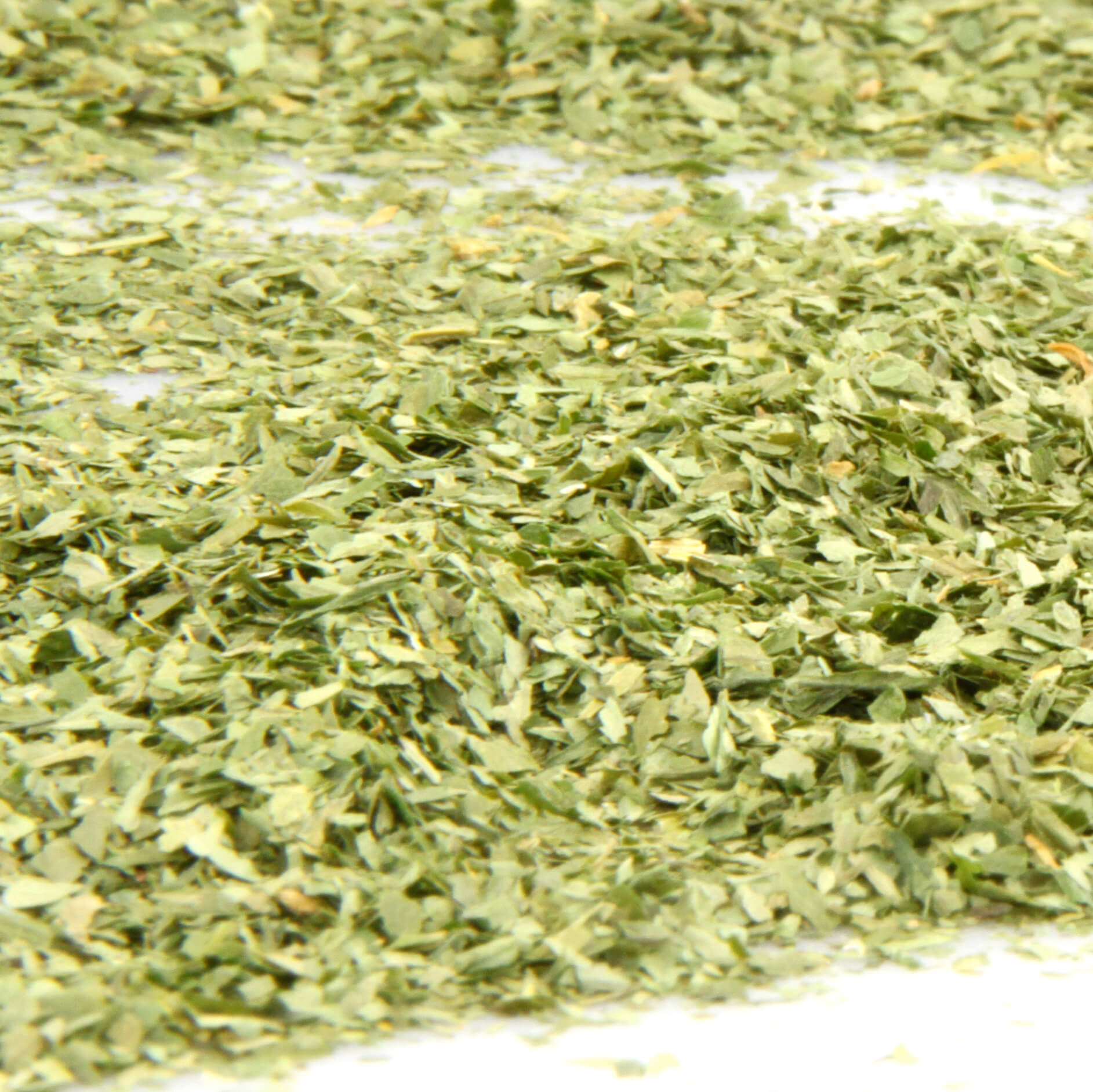usage: Wild garlic is a well-known vegetable, spice and medicinal plant. Although the plant is completely edible, the leaves are mainly used, often with the stalks, fresh as a spice, for dip sauces, herb butter and pesto or generally as a vegetable in the spring kitchen. Bear's garlic gimchi produced by lactic acid fermentation can also be kept for many months. Tip: Recipe suggestion: Things to know: botany: Home & Distribution: Cultivation & extraction: History: Wild garlic
butter, quark, yoghurt, soups and salads
Should not be boiled along, otherwise it loses its aroma
Wild garlic butter: Finely chop 1 bunch of wild garlic or use pure dried wild garlic from the spice rack. Season with a little salt and knead into the warmed butter.
Caution: When collecting fresh bear's lox, do not confuse it with the highly poisonous lily of the valley herb!
Bear's garlic (Allium ursinum) is a plant species from the genus Allium and thus related to chives, onions and garlic. This plant species, which is common and frequent in Europe and parts of Asia, especially in forests, and which sprouts early in the year, is a valued wild vegetable and is collected in many places. Bear's garlic is also called garlic spinach, wild garlic, forest garlic, witch's onion, gypsy garlic, ramsons or forest lord.
Bear's garlic is found in almost all of Europe, with the exception of the evergreen Mediterranean region and the Hungarian lowlands as far as North Asia (Asia Minor, Caucasus) at altitudes ranging from sea level to 1900 meters above sea level (Prealps). It is common and can be found partly in large stands in shady, humid and humus-rich alluvial and deciduous forests, in floodplains, gorges, under bushes or along streams.
Bear's garlic grows in semi-shady to shady locations on excessively moist humusy soil. It often occurs in masses.
In ancient times, scholars observed how shaggy bears would feed on the wild herb after hibernation, only to be ready for the spring hunt a short time later with smooth and shiny fur. Since then, wild garlic has been recommended in medicine as a blood-cleansing and toning herb, and used mainly as a detoxifying spring cure.
http://de.wikipedia.org/wiki/Bärlauch








